Chengdu has long been known as the “Land of Abundance.” With abundant tourist resources like Dujiangyan, Qingcheng Mountain, and the giant panda habitat, as well as numerous cultural relics such as Wuhou Shrine, Du Fu Thatched Cottage, and Kuanzhai Alley, there are many places with beautiful scenery and historical significance. So, why have many people chosen to visit Chengdu over other destinations in recent years? I believe it’s because of the city’s convenience and laid-back lifestyle that satisfy travelers.
According to feedback from those who have visited Chengdu, at every famous tourist spot, there are dedicated tourist buses waiting. When you want to shuttle seamlessly between different attractions, you can simply take these buses, which will take you to your desired destinations. Moreover, the tourist buses offer various routes to meet different travelers’ destination needs. It is evident that this is very convenient for tourists, as they don’t need to drive or take taxis and don’t have to plan the routes themselves.
Now that we have learned about Chengdu’s hospitality and services for external visitors, let’s explore the highly recommended things to do in Chengdu.
1. Chengdu Research Base of Giant Panda Breeding (¥55)

The Chengdu Research Base of Giant Panda Breeding is the most popular attraction in Chengdu, located at 1375 North Panda Avenue in the Chenghua District. Covering an area of 1000 acres, it is a world-famous conservation, research, and educational center for giant pandas.
The base has many “panda villas,” which are enclosed leisure areas for the pandas. There are outdoor yards and indoor resting rooms where visitors can observe the adorable pandas playing.
2. Dujiangyan Irrigation System (¥80)
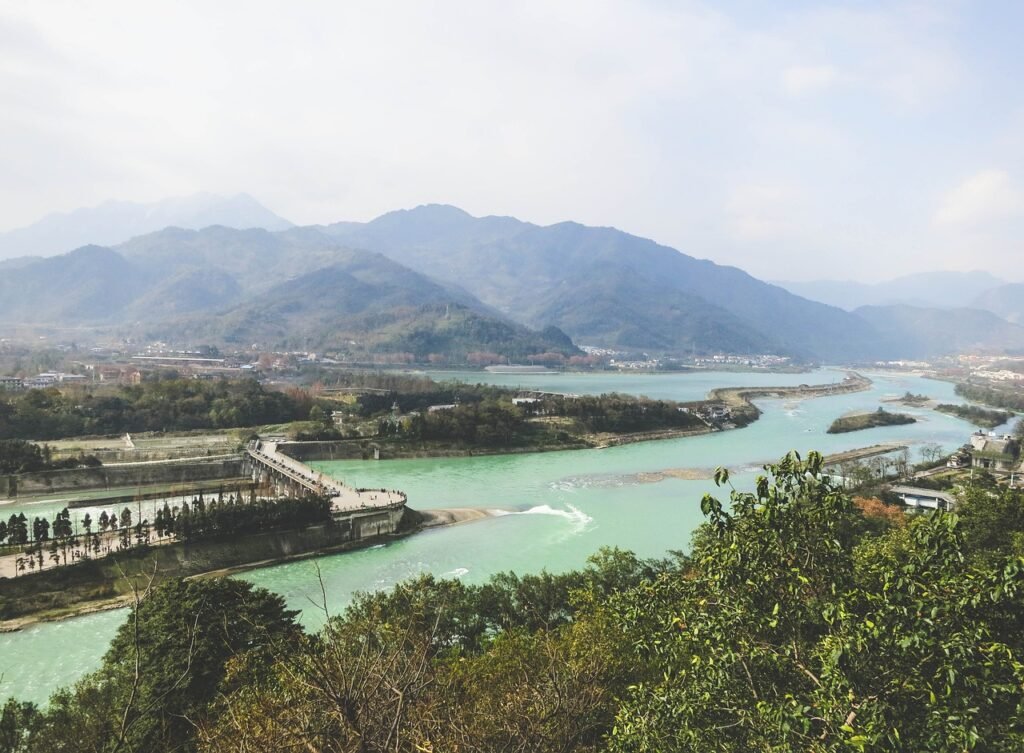
Located on the Minjiang River, west of Dujiangyan City, the Dujiangyan Irrigation System was built around 256 BC by Li Bing, the Prefect of Shu County during the Qin Dynasty. It is one of the most well-preserved ancient irrigation systems in China.
The Dujiangyan Irrigation System offers breathtaking scenery and numerous cultural relics. The perfect combination of mountains, water, forests, and ancient buildings makes it a renowned scenic area. If you are interested in ancient Chinese water conservation technology, this is a must-visit attraction.
3. Du Fu Thatched Cottage (¥50)
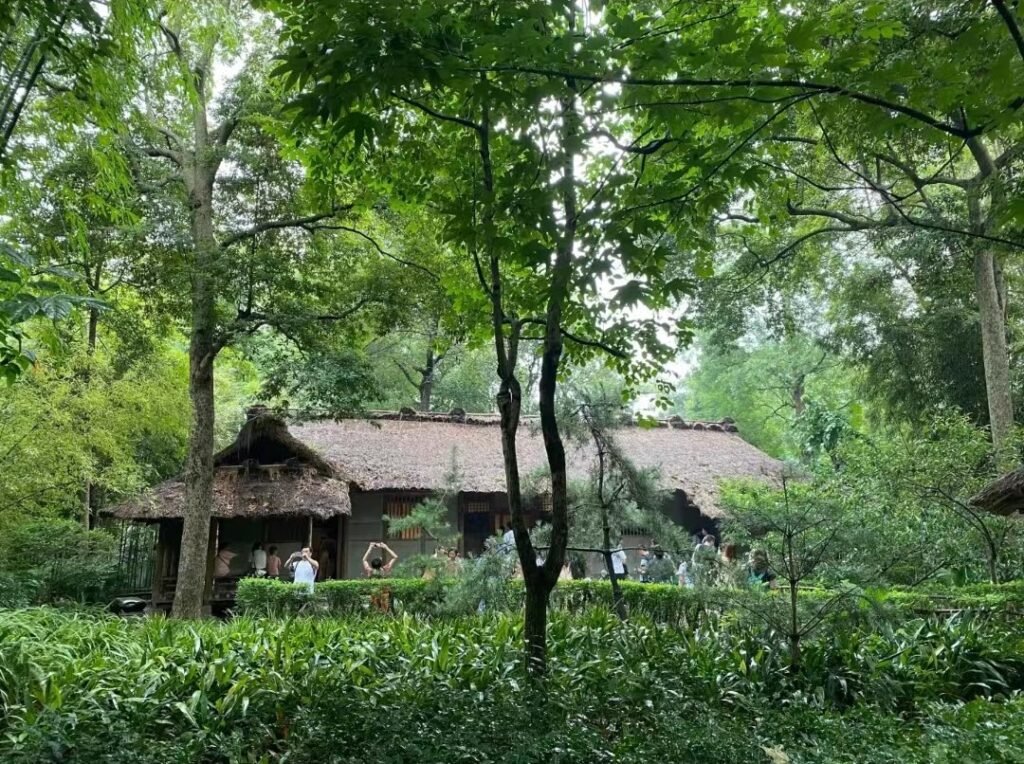
The Thatched Cottage of Du Fu was the residence of the famous Tang Dynasty poet Du Fu during his stay in Chengdu. Du Fu lived here for nearly four years and composed over a hundred poems, earning it the title of “Holy Land” in Chinese literary history. If you are a poetry enthusiast or interested in Chinese historical literature, this place will pleasantly surprise you.
The current Thatched Cottage of Du Fu is the result of multiple renovations during the Song, Yuan, Ming, and Qing Dynasties, not in its original state from over a thousand years ago. It is also an important site for the preservation of ancient Chinese texts, housing the precious Chunxi engraved edition of Du Fu’s works, a treasure of the Thatched Cottage.
4. Wuhou Shrine (¥50)

Wuhou Shrine is the only temple in China where the king and the minister (Liu Bei and Zhuge Liang) are enshrined together, making it one of Chengdu’s most famous landmarks. Many Chinese people greatly admire and appreciate Zhuge Liang, a renowned historical figure known for his political, military, and inventiveness achievements.
The Wuhou Shrine cultural relic area mainly consists of Huiling, Hanzhaolie Temple, Wuhou Shrine, and Sanyi Temple. Inside the shrine, there are 50 statues of Shu-Han heroes. Numerous stone inscriptions and plaques related to Zhuge Liang and the Three Kingdoms culture can also be found in the area.
In addition to the cultural relic area, Wuhou Shrine also has a garden area and Jinli Ancient Street. If you visit during a season with pleasant weather, exploring the garden area with pavilions and terraces can be quite enjoyable.
5. People's Park (Free)
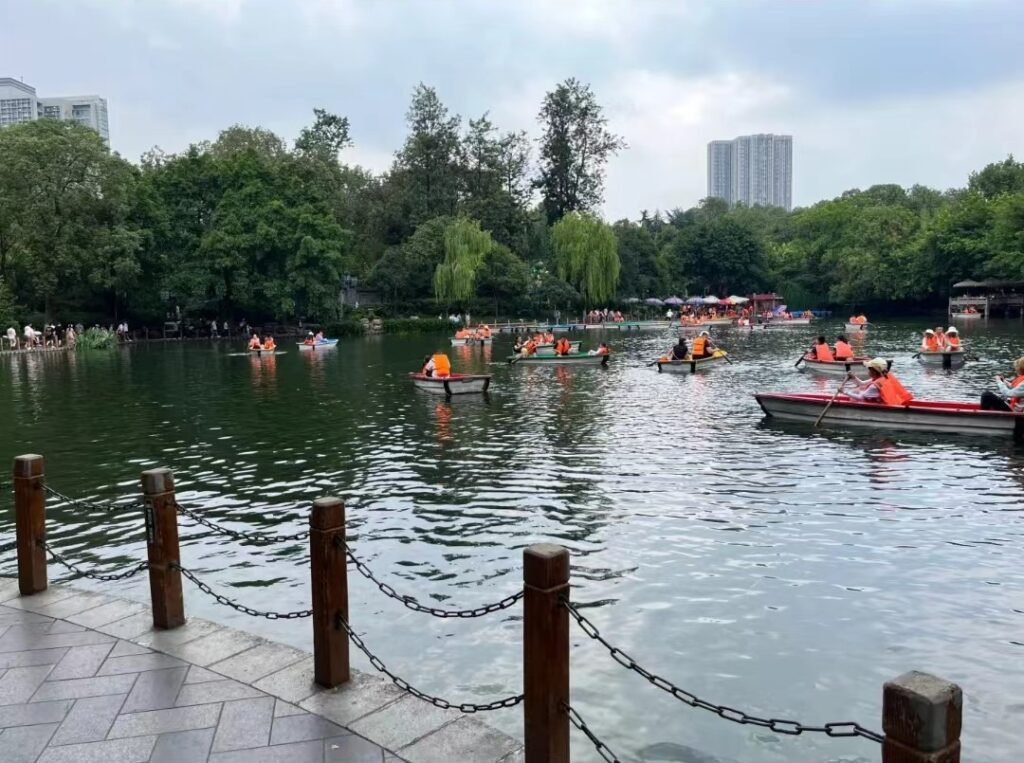
Chengdu People’s Park is an excellent choice to experience the leisurely and laid-back lifestyle of the locals. Many Chengdu residents spend a lot of time here, enjoying activities such as drinking tea, chatting, playing chess, badminton, and dancing. It offers a rich and vibrant atmosphere of local life.
People’s Park is a comprehensive garden integrating culture, relics, and recreational activities. It features natural landscapes such as the Jinshui Creek and Bonsai Garden, complemented by a variety of vegetation and streams.
One of the most famous spots in the park is the Heming Teahouse, which has maintained its style for nearly a century. The typical setting includes bamboo chairs, low tables, and covered tea cups, with the famous “fragrant tea” as the signature drink.
6. Kuanzhai Alley (Free)
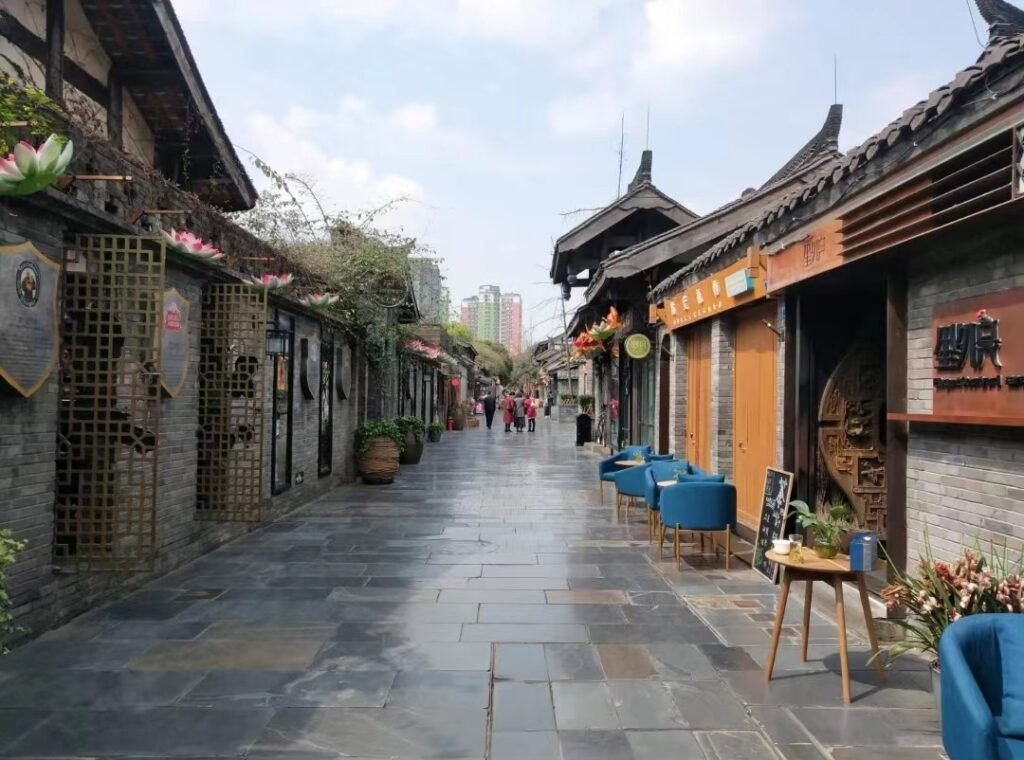
Kuanzhai Alley is a must-visit landmark in Chengdu and one of the representations of the leisurely city life. It is the only well-preserved ancient street from the Qing Dynasty, consisting of three parallel lanes: Wide Alley, Narrow Alley, and Well Alley, along with the courtyard clusters. Many tourists come here to enjoy tea, indulge in hotpot, and experience Chengdu’s relaxed, slow, and modern lifestyle.
At night, Kuanzhai Alley reveals a different charm with bars like Dianzui, Baiye, and Huli exuding Chengdu’s fashionable vibe, showcasing its allure after dark. The attraction is open all year round, allowing visitors to enjoy its scenic beauty anytime and immerse themselves in the atmosphere of Chinese history and culture.
7. Jinli Ancient Street (Free)
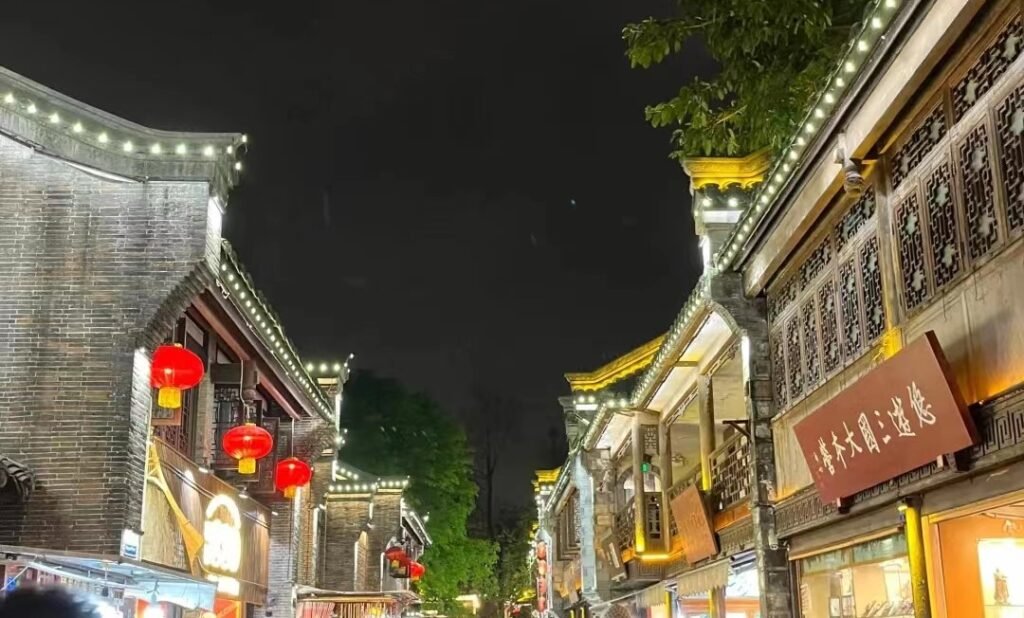
Jinli Ancient Street is a well-known commercial pedestrian street in Chengdu, located at No. 231 Wuhou Ci Street, Wuhou District. Adjacent to Wuhou Shrine, Jinli Ancient Street consists of numerous Qing Dynasty-style antique buildings, offering various residential houses, bars, and renowned dining establishments.
After visiting Wuhou Shrine, tourists often stroll through Jinli Ancient Street, which brims with Chengdu’s vibrancy and casualness. The street features blue-tiled houses with meandering flagstone roads. Shops on both sides sell a variety of local specialties, such as handmade leather bags, colorful cloth lanterns, and many local artisans crafting sugar paintings and dough figurines. Besides, a wide range of delicious local delicacies like Zhangfei Beef, tofu pudding, beef pancakes, and bobo chicken, each with its unique flavor.
During the evening, Jinli Ancient Street illuminates with red lanterns, and the bars and teahouses become lively. Notably, the famous Lianhua Fudi Bar invites local singers for performances every night, offering a place for tired visitors to rest.
8. Taikoo Li (Free)
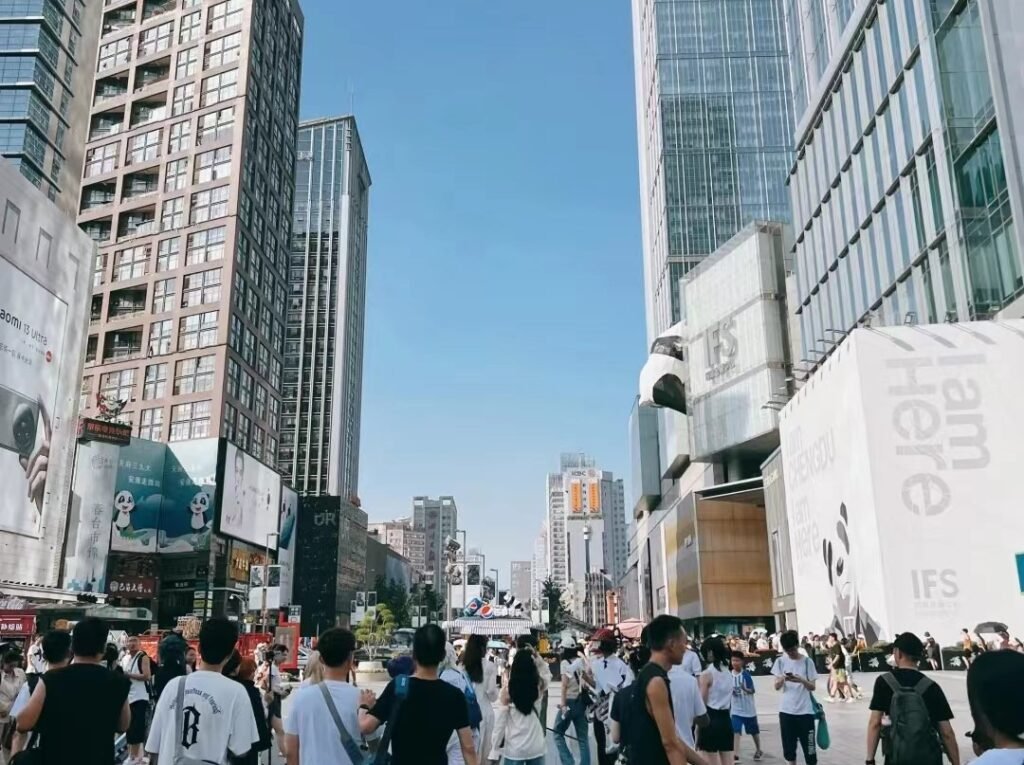
Located in the center of Chengdu, Taikoo Li is a unique architectural complex that blends tradition and modernity. It showcases diverse architectural styles, preserving traditional courtyards and Sichuan’s western plains’ unique architectural features with stone walls, green tiles, and wooden structures, evoking a sense of time travel to the past.
Taikoo Li also features modern architectural designs, incorporating various styles such as modernism, postmodernism, and international styles. With their distinct appearances and the use of glass, steel, concrete, and other modern materials, these buildings exhibit urban prosperity and fashion.
More than just a commercial area, Taikoo Li is a hub of culture, art, and fashion. Here, you can experience the fusion of tradition and modernity, witnessing the dialogue between history and reality. The different architectural styles complement each other, creating a unique atmosphere that attracts countless tourists and photography enthusiasts to explore and capture its essence.
9. Chunxi Road (Free)
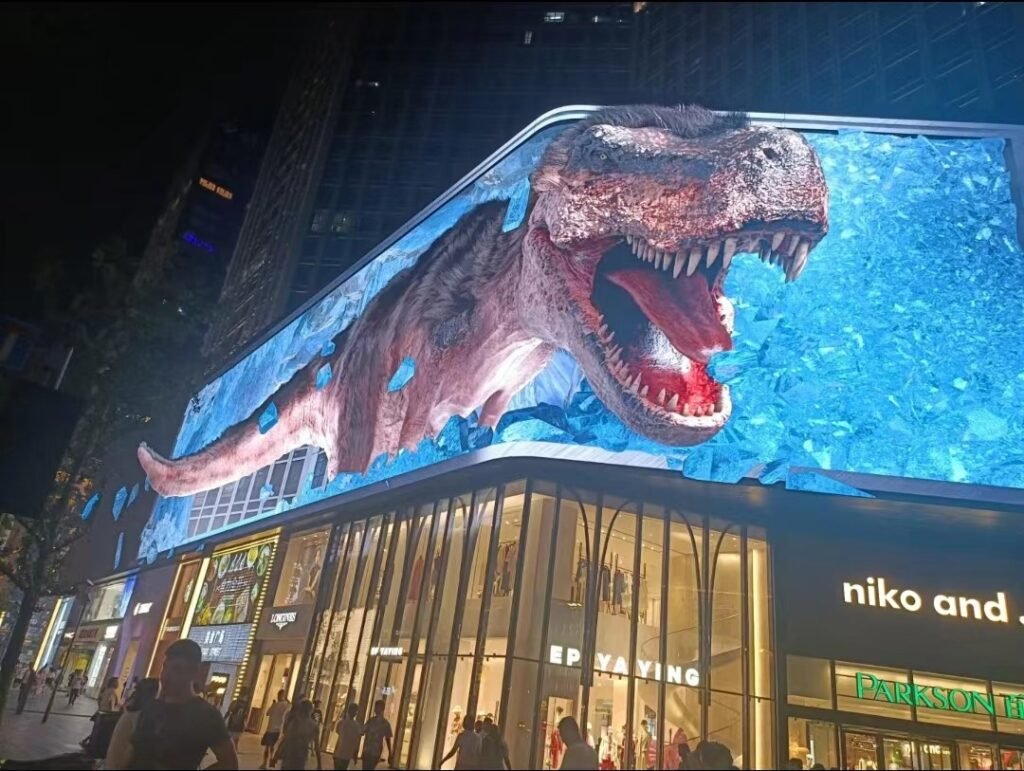
Chunxi Road is Chengdu’s fashion center and a hub for local delicacies and beautiful women. Visiting this iconic commercial pedestrian street, savoring local cuisine, and appreciating the charming locals are must-do experiences in Chengdu.
Chunxi Road is not just a single street but refers to an entire commercial area. For out-of-town visitors, not strolling through Chunxi Road in Chengdu is akin to not visiting Wangfujing in Beijing or Nanjing Road in Shanghai, resulting in regret.
Both sides of Chunxi Road are lined with century-old shops, fashionable malls, brand boutiques, and delectable eateries. Famous snacks like Zhongshui Jiaozi, Lai Tangyuan, Korean Baozi, and Long Chao Shou have their branches here. During weekends, Chunxi Road turns into a gathering of beauties.
10. Tianfu Square (Free)
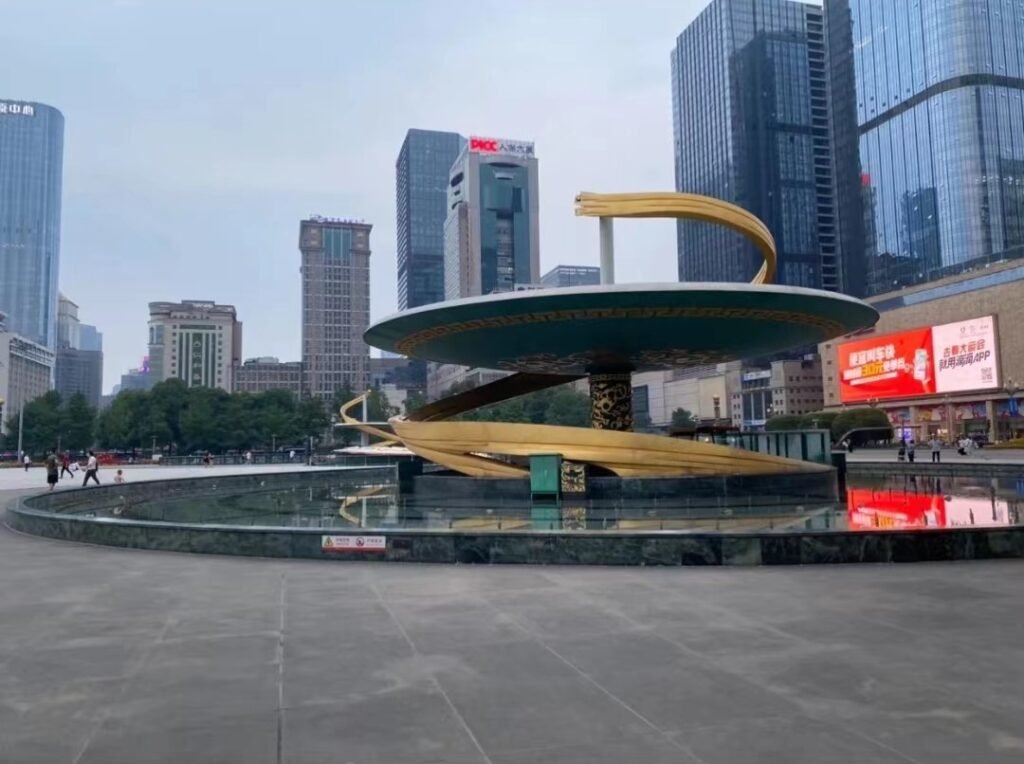
Tianfu Square is located in the center of Chengdu, housing the Provincial Exhibition Hall and serving as the city’s earliest landmark, comparable to Beijing’s Tiananmen Square. It also functions as Chengdu’s transportation hub, with Metro Lines 1 and 2 intersecting here.
Around the square, you’ll find buildings such as the new Chengdu Museum, Sichuan Science and Technology Museum, and Jin Cheng Art Palace. Many of Chengdu’s tourist attractions are oriented around Tianfu Square, with Chunxi Road and Wangfujing to the east, Wenshu Monastery to the north, and People’s Park, Kuanzhai Alley, and Jinli to the west.
11. Wenshu Monastery (Free)
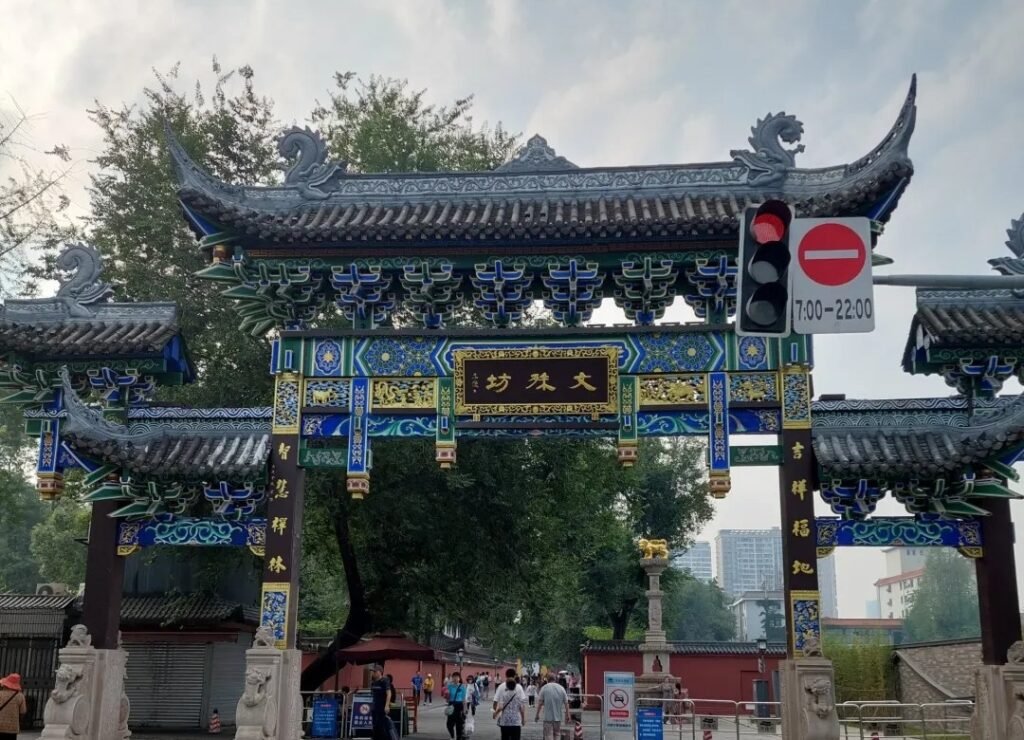
Also known as “Konglin Monastery,” Wenshu Monastery covers an area of over 200,000 square meters. It is the best-preserved Buddhist temple in Chengdu, facing south in typical Sichuan-style ancient architecture, mainly featuring wooden structures. The monastery consists of six main halls: Tianwang Hall, Sandashi Hall, Daxiongbaodian Hall, Shuofatang, and Cangjinglou. The surrounding buildings such as the bell tower, dining hall, and corridors blend seamlessly, representing typical Qing Dynasty architecture.
The monastery houses numerous precious calligraphy and paintings from the Ming and Qing Dynasties. Notably, the “Konglin” plaque bestowed by Emperor Kangxi in 1702 and the “Haiyue” scroll by the Song Dynasty calligrapher Mi Fu are renowned. Additionally, it preserves Buddhist relics like Xuanzang’s skull, Indian palm leaf sutras, and Tang Dynasty Japanese gilded sutra.
In front of Wenshu Monastery is Wenshu Street, now called Wenshufang, known as the “Urban Zen Forest.” It features antique-style architecture and many traditional snacks.
12. Jiuyan Bridge (Free)
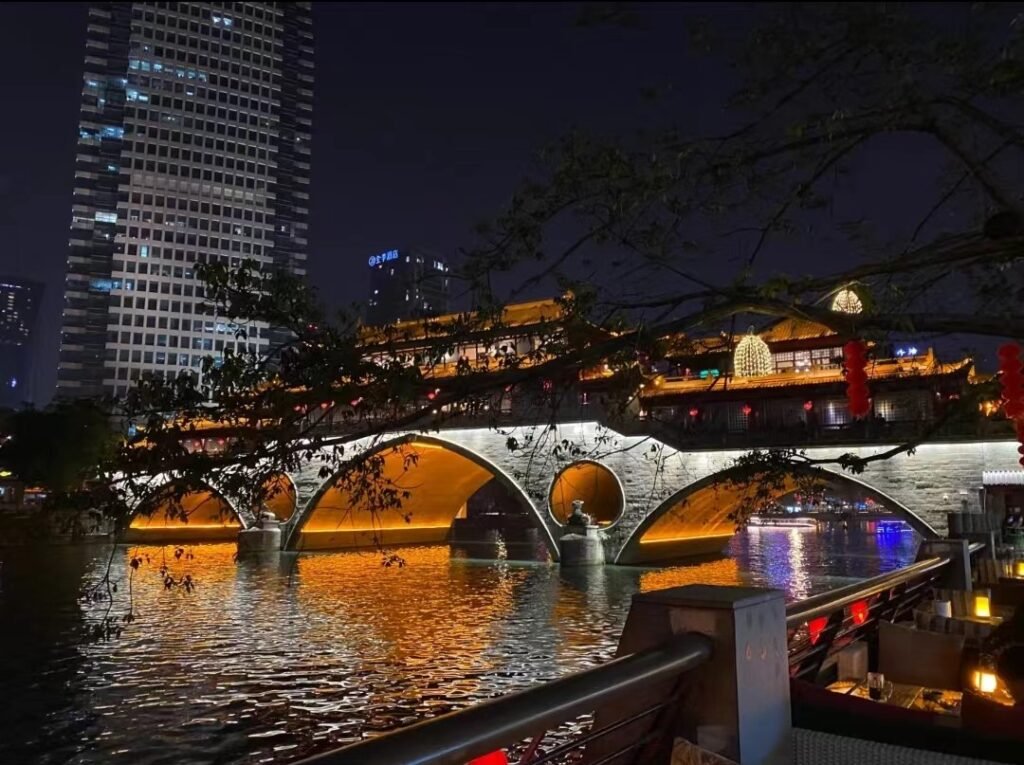
Jiuyan Bridge, located near the Sichuan Conservatory of Music, represents Chengdu’s nightlife culture, synonymous with bars and entertainment. Strolling along the 500-meter-long bar street by the Funan River, various bars shine with neon lights, playing lively music and welcoming visitors.
As the night deepens, you will reach Anshun Bridge spanning the Jin River. Standing on this bridge, which dates back to the Yuan Dynasty, you can sense Chengdu’s pulse over the millennia, listen to the city’s enduring breath, feel the cool breeze from the river, and find the most comfortable state of mind in this laid-back city.
13. Qingcheng Mountain (¥80/¥20)
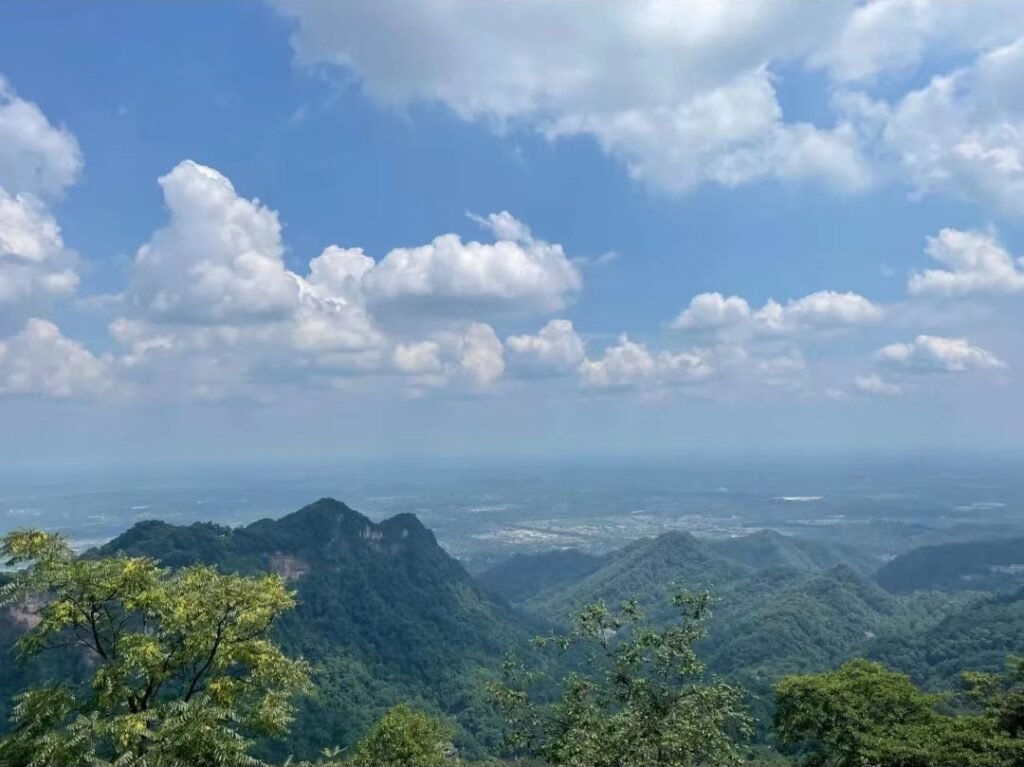
Qingcheng Mountain, located about 10 kilometers southwest of the Dujiangyan Irrigation System, is a sacred site of Daoism globally, one of the Four Famous Daoist Mountains in China, one of the Five Sacred Mountains of Daoism, one of the birthplaces of Daoism in China, and one of Chengdu’s Ten Scenic Spots.
Covering an area of 200 square kilometers, with the highest peak Laojun Pavilion reaching an altitude of 1,260 meters, the mountain features undulating peaks, lush forests, and tranquility, earning it the reputation of “Qingcheng: The World’s Most Secluded.”
Qingcheng Mountain boasts unique geological landscapes, dense vegetation, and a pleasant climate. It offers more than 500 natural attractions, including Flying Springs, Immortal Caves, Red Cliffs, Five Dragons, Canyon Plank Roads, Yuantan Water Curtain, Linggu Flying Waterfall, and stalactites, creating a mesmerizing and enchanting panorama.
14. Chengdu Museum (Free)

Chengdu Museum (Chengdu Chinese Shadow Puppetry Museum) is a public welfare institution affiliated with the Chengdu Municipal Bureau of Culture, Radio, Film, and Tourism. It is located west of Tianfu Square and consists of the South and North Buildings:
The South Building is mainly for offices and research areas, and the underground area houses the Academic Lecture Hall (a multi-functional hall). The North Building is mainly an exhibition area, with the first floor featuring the hall, screening room, and special exhibition hall. The underground first floor showcases the Human and Nature thematic exhibition, and the second to third floors house the Ancient Chengdu History and Culture Exhibition. The fourth floor is for the Modern and Folklore Exhibitions, while the fifth floor exhibits Chinese Shadow Puppetry, and the total exhibition area spans nearly 20,000 square meters.
The Chengdu Museum collection includes nearly 200,000 artifacts, forming a relatively complete sequence from the Neolithic period to the Republic of China. It covers various types, such as bronze wares, gold and silver wares, clay figurines, stone carvings, ceramics, calligraphy, furniture, shadow puppets, wooden puppets, Daoist ritual paintings, masks, wood carvings, etc. In terms of quantity and quality, Chengdu Museum ranks among the top museums in China.
15. Jinsha Site Museum (¥70)
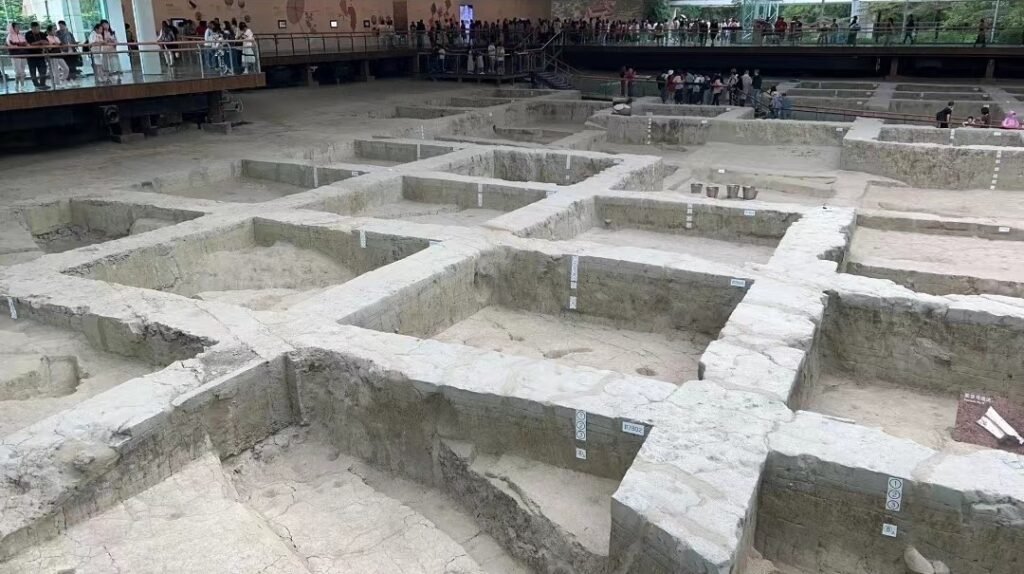
Jinsha Site Museum is located in the northwest of Chengdu city. The museum covers an area of 300,000 square meters, with a total construction area of about 40,000 square meters, divided into the Ruins Hall, Exhibition Hall, Cultural Relics Conservation and Restoration Center, Cultural Exchange Center, and Garden Area.
The museum’s collection is rich and diverse, possessing high historical, scientific, cultural, and artistic value. The exhibition showcases the splendid history of the ancient Shu Kingdom from various perspectives, such as archaeological sites, ecological environments, production and life, religious rituals, and cultural background.
Jinsha Site was recognized as one of the “Top Ten Archaeological Discoveries in China in 2001,” designated as a national key cultural relic protection unit and one of the first national archaeological site parks. It, along with Sanxingdui Site, is listed in the “Tentative List of UNESCO World Cultural Heritage in China.” The “Sunbird” gold ornament unearthed from Jinsha Site is designated as a symbol of Chinese cultural heritage and the core pattern of Chengdu city’s image.
16. Wangjianglou Park (Free)
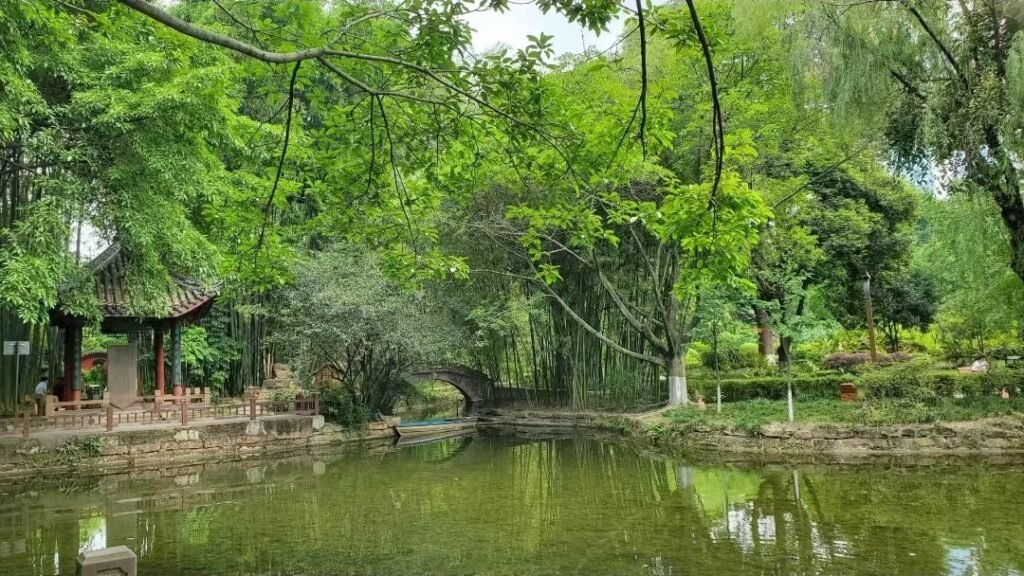
Wangjianglou Park, built in the 15th year of the Qing Emperor Guangxu’s reign, is one of Chengdu’s landmark buildings, dedicated to commemorating the Tang Dynasty female poet, Xue Tao.
The park’s main structures include Wangjiang Tower, Zhuojin Tower, Huanjian Pavilion, Wuyun Xian Guan, and a memorial hall dedicated to Xue Tao, where visitors can gain insight into her life and works.
To honor Xue Tao’s memory, various exquisite bamboo species have been planted throughout the park, with more than 200 varieties, earning it the nickname of “Bamboo Park.”
17. Qingyang Palace (¥10)
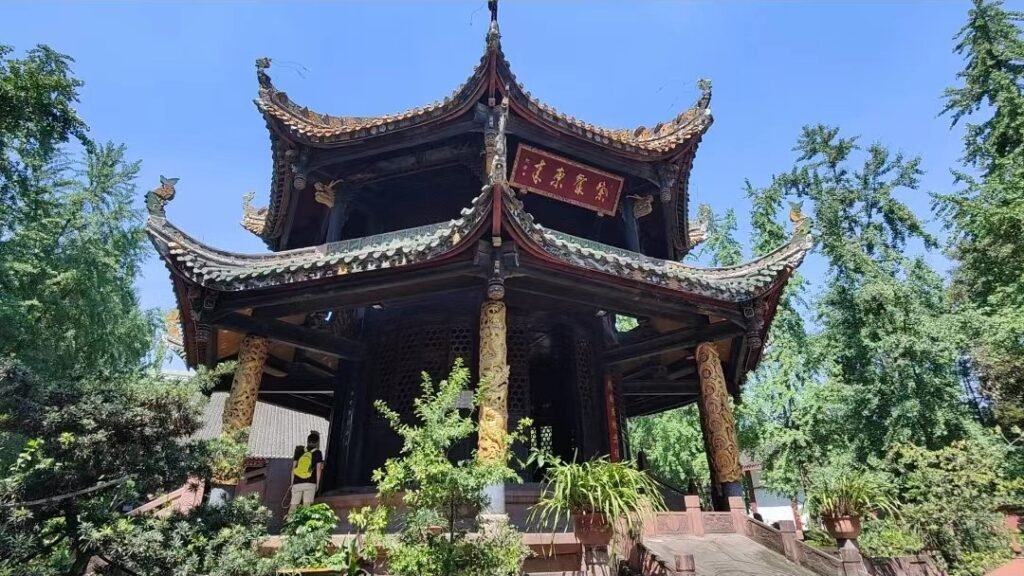
Originally established during the Zhou Dynasty, most of the current buildings are reconstructions from the Qing Dynasty. It is one of China’s renowned Taoist palaces and is praised as the “Number One Daoist Temple in Western Sichuan.”
The palace houses the precious “Daozang Jiyao,” a Taoist historical document carved during the Guangxu era, which represents the most complete collection of Taoist classics in China.
Within the Three Pure Ones Hall of Qingyang Palace, two copper-made green goats are placed. The goat on the left is believed to be transformed by the attendant of the Green Emperor and has the power to cure various illnesses. Visitors only need to touch the corresponding part of the goat’s body related to their ailment to alleviate their pain.
The palace is bustling with worshippers and exudes a strong Taoist atmosphere, making it a favorite leisure spot for locals.
18. Jinjiang Theatre (¥150+)

Jinjiang Theatre is Chengdu’s center for Sichuan Opera art. It is located at 54 Huaxing Street, Jinjiang District, Chengdu. Originally known as “Yuelai Tea Garden,” it was established in 1908 (the 34th year of the Guangxu era) and has a history of nearly 100 years. It is the first large-scale comprehensive cultural and entertainment venue in China named after Sichuan Opera, featuring Jinjiang Theatre, Yuelai Tea Garden, and Sichuan Opera Art Museum.
Built on the site of the origin of Sichuan Opera, “Yuelai Tea Garden,” Jinjiang Theatre is an artistic center combining the classical western Sichuan architectural style with modern interior decoration, and it is widely recognized as the “cradle of Sichuan Opera.” Since its establishment, the famous Sichuan Opera troupe “Sanqing Club” has been performing here.
19. Shufeng Sichuan Opera Theatre (¥120+)
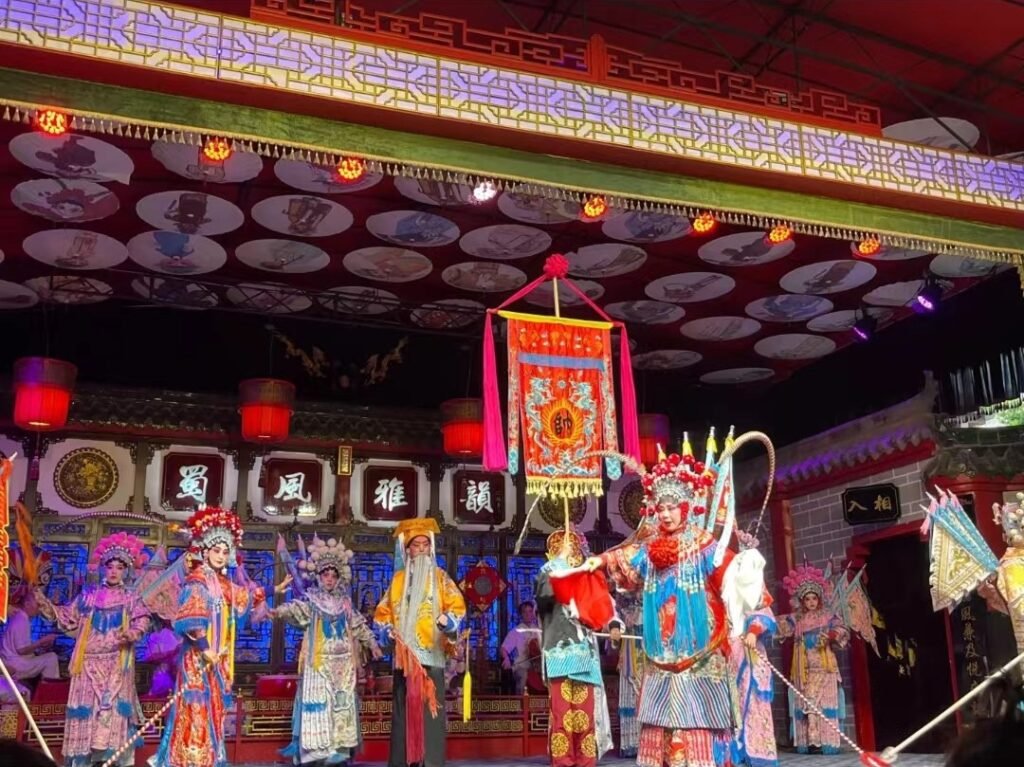
The performance of Sichuan Opera, known as “Shufeng Yayun,” is a dazzling gem in China’s treasury of traditional opera. It is a favorite art form cherished by people in Sichuan, Yunnan, Guizhou, and other provinces in Southwest China. Sichuan Opera consists of four major singing styles, Gaoqiang, Kunqu, Huqinqiang, and Ruoqiang, plus one local folk lantern drama style. Apart from the lantern drama, all the other four styles were introduced into Sichuan from other provinces during the late Ming Dynasty and the middle of the Qing Dynasty.
20. Xiling Snow Mountain (¥120)
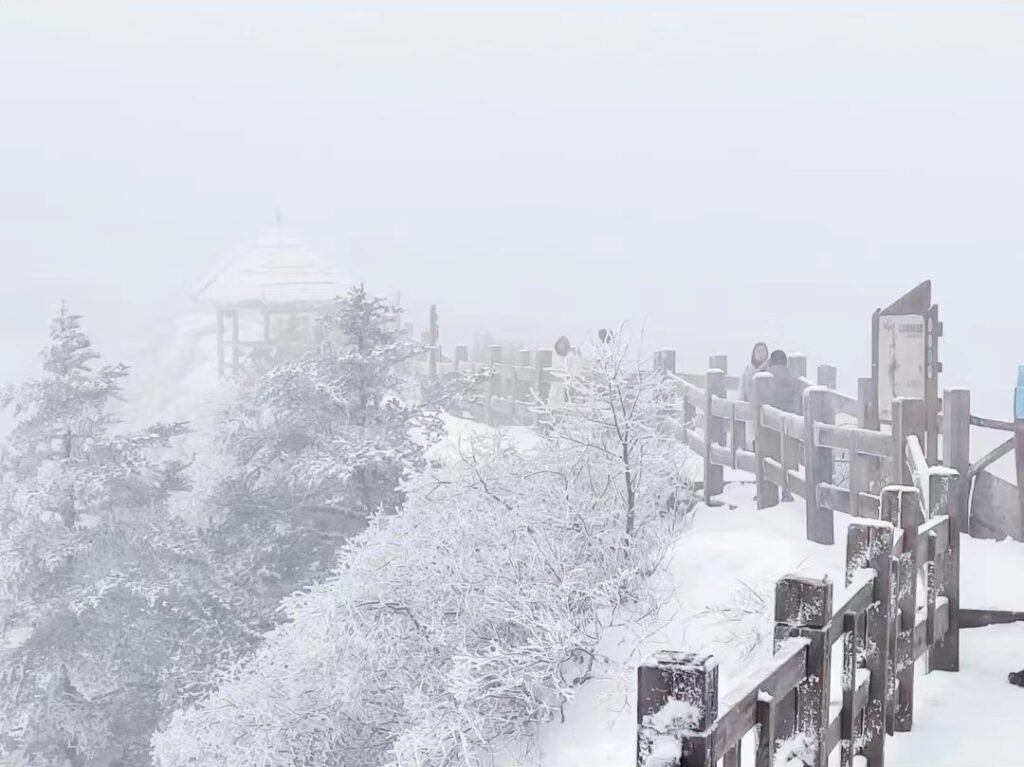
Xiling Snow Mountain is a world natural heritage site, the habitat of giant pandas, a national-level scenic spot, a national forest park, and a AAAA-rated tourist attraction. It boasts various honors and titles.
The highest peak in the scenic area is Daxuetang, which stands at an altitude of approximately 5,364 meters, making it Chengdu’s highest peak. The great Tang poet, Du Fu, praised the beautiful scenery of Xiling Snow Mountain and wrote the famous line, “The window holds the thousand-year snow of Xiling.”
In addition to the ski resort, the scenic area offers more than ten ice and snow amusement projects, such as snowmobiles and dog-pulled sleds, making it an excellent destination for thrill-seeking tourists.
Conclusion
In conclusion, Chengdu offers a diverse array of attractions for travelers. From historical landmarks to cultural gems, and from natural wonders to modern entertainment hubs, Chengdu has something for everyone. Explore Wangjianglou Park’s serene beauty, experience Taoist heritage at Qingyang Palace, and enjoy Sichuan Opera at Jinjiang Theatre and Shufeng Sichuan Opera Theatre. Discover Chengdu’s rich history at the Chengdu Museum and immerse yourself in nature at Qingcheng Mountain and Xiling Snow Mountain. Indulge in the city’s leisurely lifestyle at Kuanzhai Alley, Jinli Ancient Street, and Chunxi Road. Don’t miss the iconic giant pandas at the Chengdu Research Base of Giant Panda Breeding. Chengdu’s unique blend of treasures and friendly ambiance promises an unforgettable experience for travelers.



